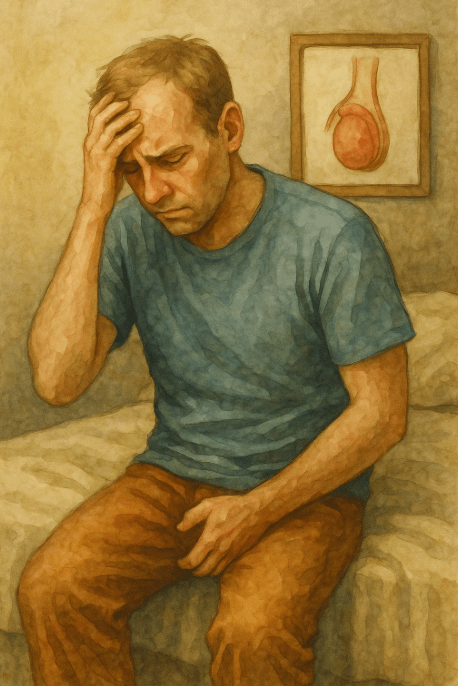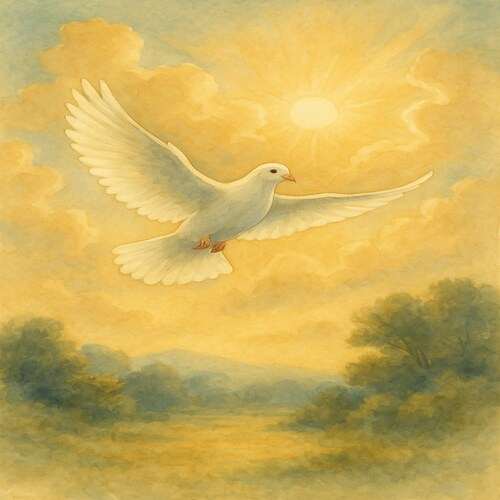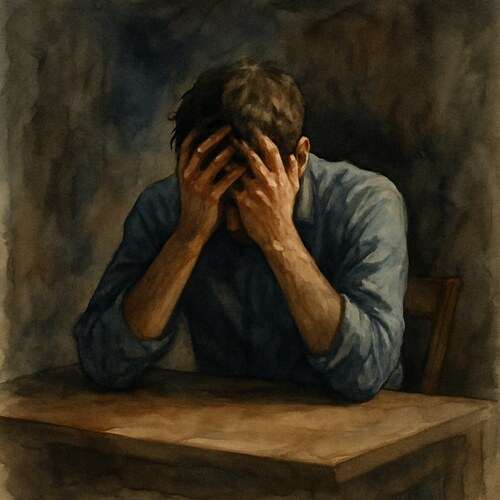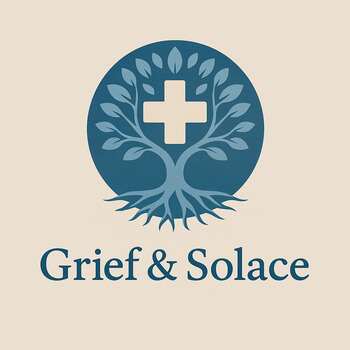Grieving Testicular Cancer: Fighting for Life and Manhood at the Same Time
Grief tied to testicular cancer runs deeper than survival, mourning pride, identity, and the silent wars waged behind closed doors.

This post blends real grief with grounded knowledge. It isn’t clinical. It isn’t distant. It’s meant to sit beside you—not above you. The story you’ll read is meant to reflect what so many feel when living through or witnessing this condition: confusion, exhaustion, and quiet forms of courage.
If what you read feels familiar, please speak with your doctor. Your pain deserves more than silence.
He Beat the Cancer but Carried the Scars Where No One Could See
He found the lump by accident, didn’t think much of it at first, maybe a pulled muscle, maybe a cyst…nothing serious. But it grew, and when the doctor stopped smiling mid-exam, he knew. Testicular cancer. He was twenty-six, healthy, strong, still climbing the ladder at work, still planning a future that didn’t have chemo in the margins.
They moved fast…surgery, orchiectomy, and just like that…one testicle gone.
He made jokes, laughed about it with his friends, said he’d be “off balance for a while,” and called himself half the man, twice the trouble. But underneath the humor was something quieter, something raw.
🧠 Symptoms:
– Lump or swelling in one testicle, often painless
– Feeling of heaviness in the scrotum
– Dull ache in the lower abdomen or groin
– Sudden swelling of the scrotum
– Discomfort or pain in a testicle or scrotum
– Breast tenderness or enlargement
– Back pain if cancer has spread
He didn’t talk about the night before chemo…signing the paperwork about fertility preservation, jerking off into a plastic cup under fluorescent lights, trying not to cry because what if this was his last shot at fatherhood? He didn’t talk about how it felt to look down at his own body and feel like a stranger. To run his hand across the emptiness and wonder if anyone would ever touch him without seeing what was missing.
He survived. They caught it early. The scans stayed clean. Everyone said he was lucky. But survival is not the same as wholeness. He lost something he couldn’t quite name…not just a part of his body, but the quiet confidence that he was untouchable, indestructible.
He avoided locker rooms, mirrors, and dating because how do you bring up something like this when you barely understand how it’s changed you? But time passed. And he kept showing up. Kept taking care of the body that once betrayed him.
Kept learning how to be vulnerable without needing to apologize for what wasn’t his fault.
And one day, he stood naked in front of someone who didn’t flinch, who didn’t stare. Who simply said,
“You’re here. That’s enough.” And he believed it…
Causes:
– Begins with DNA mutations causing uncontrolled growth of testicular germ cells
– Most start in germ cells, which produce sperm
– Cancer may spread to lymph nodes, lungs, liver, or other organs
– Exact cause of DNA changes remains unknown
Risk Factors
– Undescended testicle (cryptorchidism)
– Family history of testicular cancer
– Age 15–45, with peak incidence in this range
– White race (higher prevalence in Caucasians)
The cancer left quickly. But the silence stayed. And in that silence, he built something stronger than symmetry…he built a man who never stopped showing up.
📘 Diagnosis & Treatment
Diagnosis
Initial Evaluation
– Physical exam: check for lumps or asymmetry
– Ultrasound: distinguishes intratesticular vs extratesticular masses
– Blood tests: tumor markers such as beta-hCG, AFP, and LDH
Surgical Confirmation
– Radical inguinal orchiectomy: removal and biopsy of the testicle to confirm diagnosis
Staging
– CT scan: assesses spread to lymph nodes, chest, abdomen, pelvis
– Repeat tumor markers after orchiectomy to determine stage
Stages
– Stage 0–1: localized to testicle
– Stage 2: spread to regional lymph nodes
– Stage 3: distant metastasis or very high tumor markers
Types
Seminoma
– Usually occurs in older patients
– Slower-growing, more sensitive to radiation
Nonseminoma
– Common in younger men
– More aggressive, includes:
– Choriocarcinoma
– Embryonal carcinoma
– Yolk sac tumor
– Teratoma
Treatment
Surgery
– Radical orchiectomy is standard for all types
– Retroperitoneal lymph node dissection (RPLND) for suspected or confirmed spread
Chemotherapy
– Often used after surgery to eliminate remaining cancer cells
– Especially in advanced stages
– Can cause temporary or permanent infertility
Radiation Therapy
– Mainly for seminomas
– Side effects: nausea, fatigue, sperm count reduction
Immunotherapy
– For resistant or advanced cases
– Boosts immune system to target cancer cells
Fertility & Preservation
– Sperm banking recommended before chemo or radiation
– Some treatments may cause permanent infertility
– Prosthetic testicles can be offered post-surgery for cosmetic reasons
Prevention
– No guaranteed prevention methods
– Self-exams can promote early detection
– Awareness of testicular changes is important, though routine screening is debated
Living With It
Testicular cancer is a quiet betrayal in an intimate place. It arrives unexpectedly—a lump, a change, a whisper of fear about fertility or masculinity. Suddenly, surgery looms, sperm banking becomes necessary, treatments threaten future dreams. The grief is in the disruption—body, identity, plans.
But you are not less. Not afterward. The high cure rate reflects your courage. Every scar is a monument—not to cancer—but to survival. Walking through it, you reclaim your body and your future, resilient and strong.
I know this is heavy, and I understand that the road ahead may feel like a tangle of loss and unanswered questions. But please hear this: you are not broken because you are hurting; you are not weak because you are afraid. You are living through something real, and survival itself is a kind of grace. You are allowed to struggle, you are allowed to hope, and you are allowed to not have all the answers today. Whatever comes next, you do not face it empty-handed; you carry every moment of love that shaped you, and that will always be enough to keep going.
🎀 Gifts to help With Testicular Cancer
🏥 Everyday Comforts for Everyday Battles
Managing Testicular Cancer often means needing a little extra help.
Sometimes it’s about restoring dignity, ease, or simply getting through the day with less pain.
These carefully chosen tools aren’t just items; they’re small bridges back to living.
This section is about finding practical support, never shame.
Post-Orchiectomy Support Brief – Protection for the Space That’s Now Missing Something
After surgery, every step feels risky—sensitivity, swelling, and a sense of loss wrapped in literal emptiness. These surgical briefs offer soft support and gentle compression to reduce movement and pain while healing. Washable, discreet, and purpose-built for dignity where it’s hardest to talk about. Because recovery starts with being able to move again—without wincing.
🌿 Paths to Healing Beyond the Map
Sometimes traditional medicine isn’t enough.
If you’re exploring gentle, alternative options to help with Testicular Cancer,
you might find comfort in plant-based compounds like **CBD or CBG**.
*This section is not medical advice, just a door left open.*
USA Medical Total Health Master Pack – Steady Support for a Body and Ego That Just Took a Hit
Testicular cancer comes fast, and treatment leaves exhaustion, immune stress, and emotional fallout in its wake. This Total Pack blends CBD, nervous system support, and gentle calm for a system trying to bounce back physically and emotionally. Not a fix. But a foothold after everything changes.
Need a Different Path Forward?
Every journey through grief looks different. Choose the next step that speaks to where you are now:
When You're Ready to Start Healing
Healing doesn’t mean forgetting.
It means finding small ways to carry your grief with strength and grace.
These are the stories, tools, and gentle steps to begin walking forward…at your own pace.
When You're Still in the Thick of It
Sometimes healing feels like a lie.
If you’re not ready to move on…if the pain still roars louder than the world wants to hear…this is the place where you’re allowed to feel it.
No sugarcoating. No pretending. Just truth.
When You're Holding on to Who’s Still Here
Grief reminds us to love louder.
If someone you love is still with you, this is your place to celebrate them, honor them, and create new memories while there’s still time.
Joy and sorrow can live side by side.






